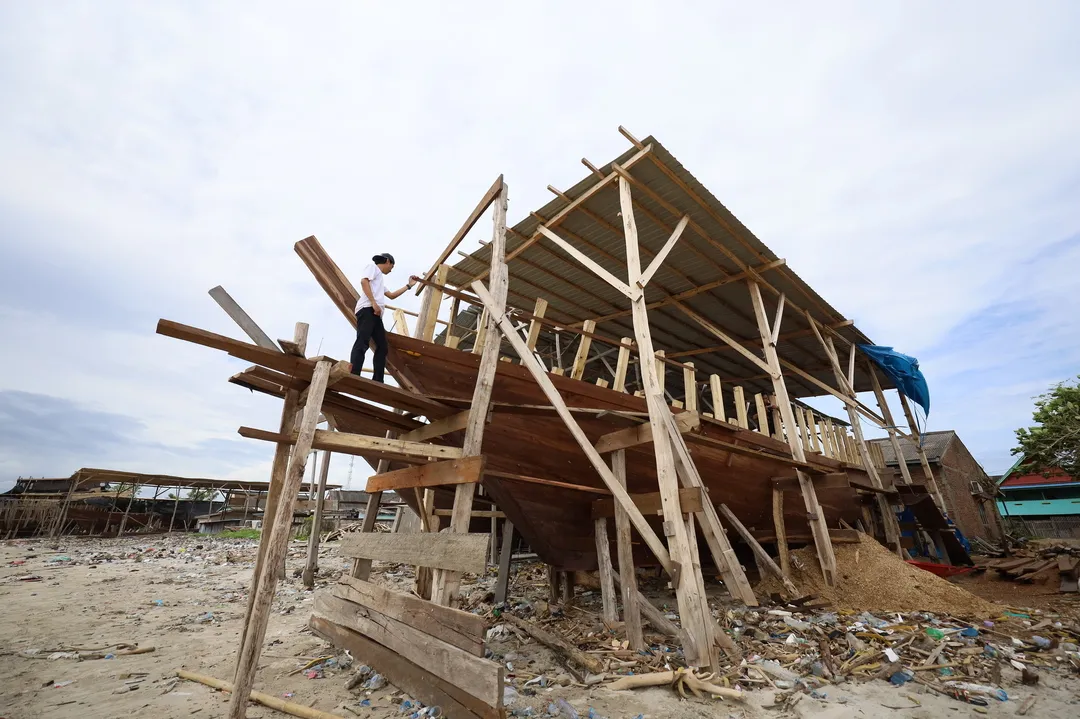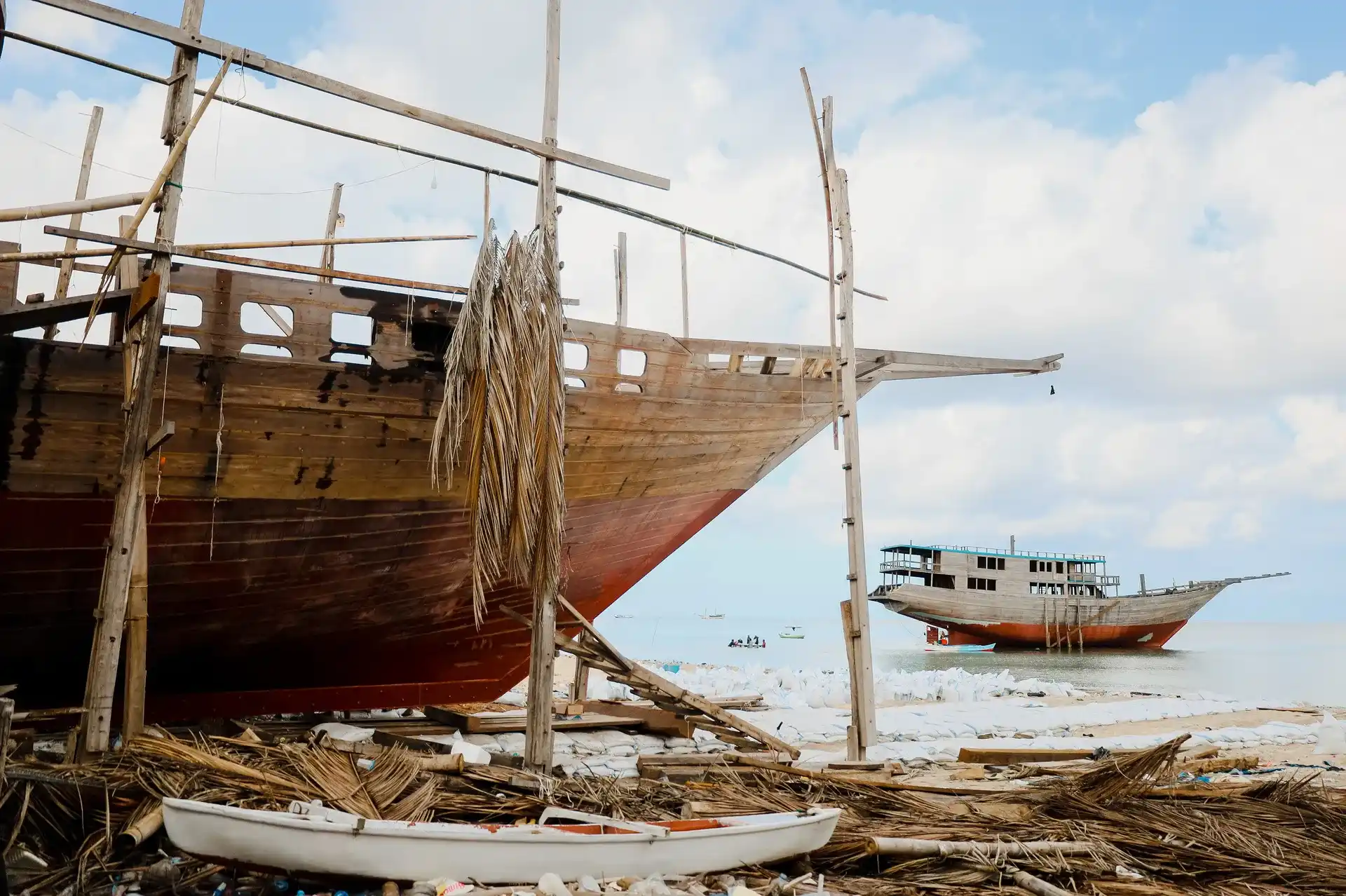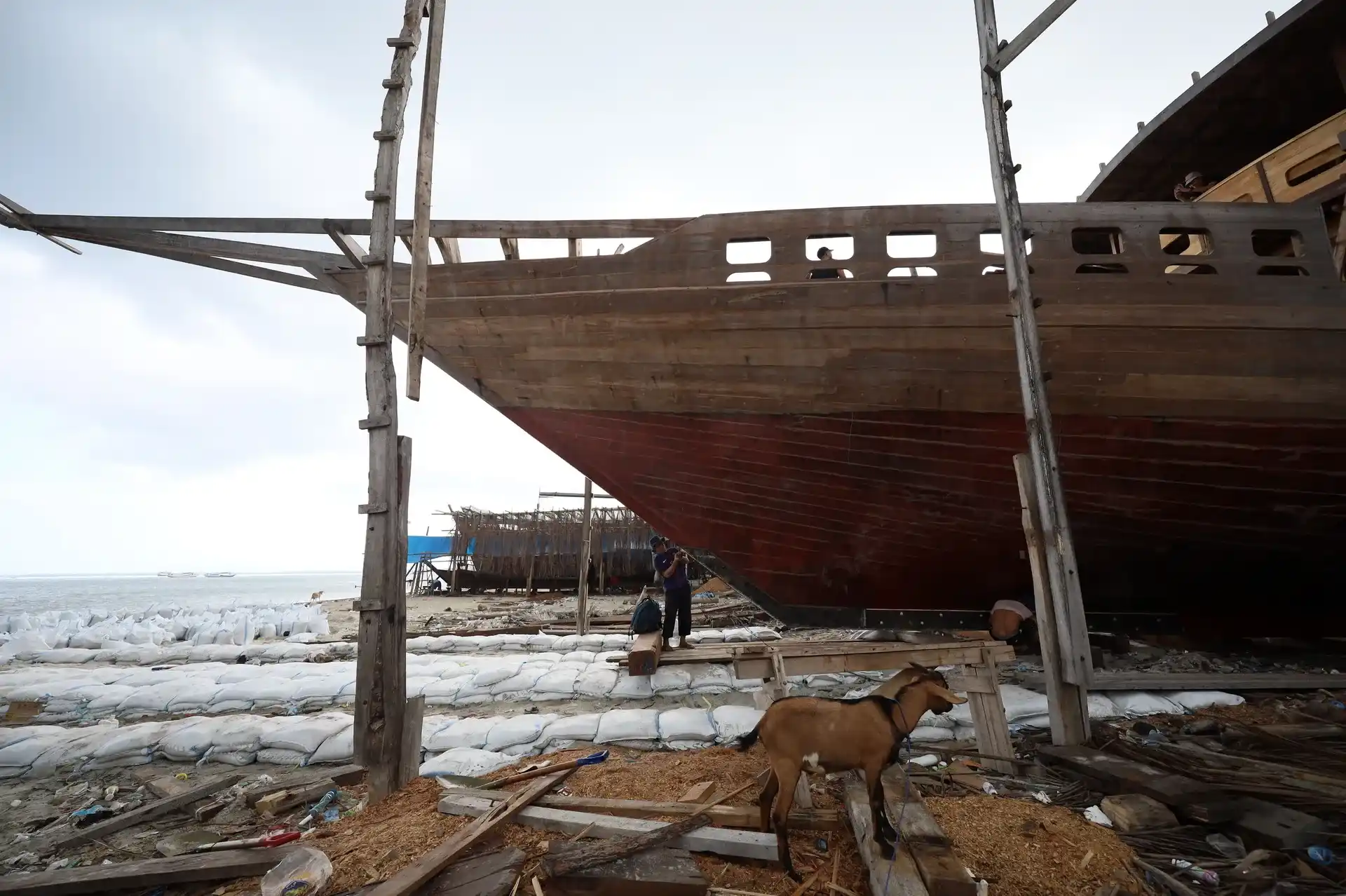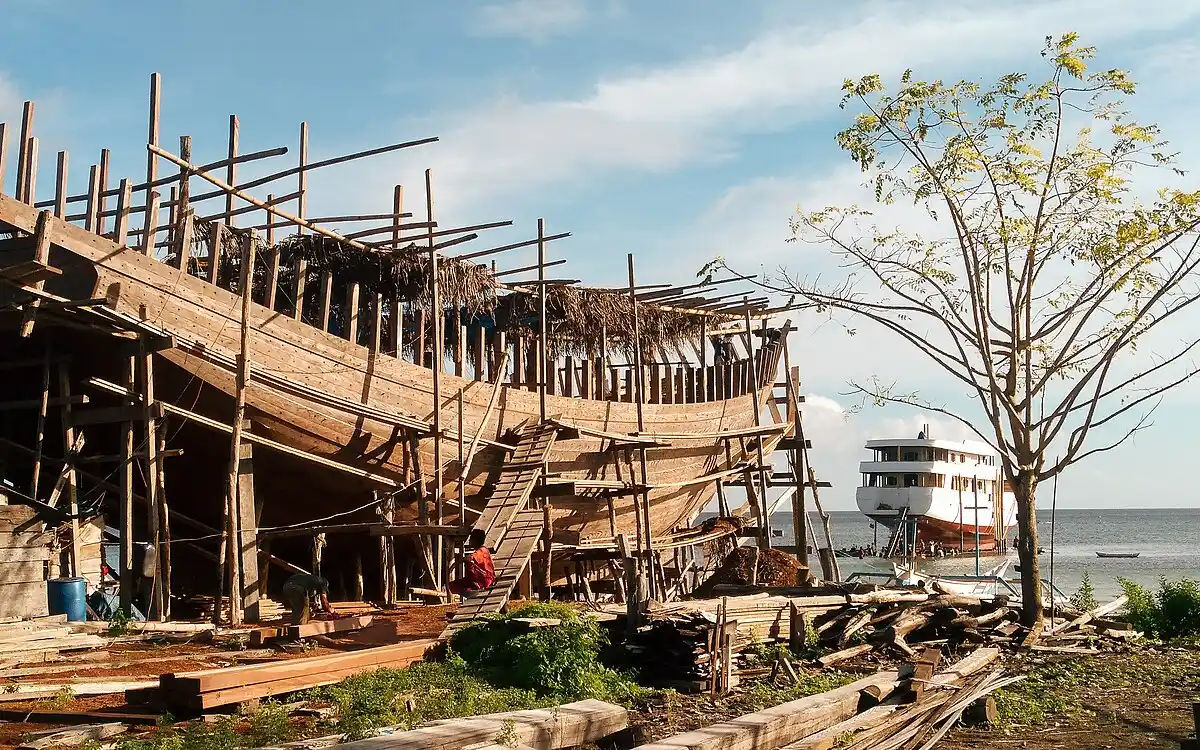The History of Phinisi: World-Class Cultural Heritage of Bulukumba

The Legendary Origins of the Phinisi Ship
The Phinisi ship stands as a timeless symbol of Indonesia’s maritime heritage, particularly representing the skilled craftsmanship and seafaring traditions of the Bugis and Makassar tribes from South Sulawesi. The origins of this majestic sailing vessel are deeply rooted in myth and oral history, most notably the tale of Sawerigading, a prince from the Kingdom of Luwu, who is said to have voyaged to China in search of love. On his return, his ship was destroyed by violent waves, with its remnants washing ashore in three legendary locations: Ara, Tana Beru, and Lemo-Lemo.
From these wrecked pieces, the local communities reconstructed the vessel, infusing their cultural beliefs, maritime knowledge, and craftsmanship into what became known as the Phinisi. This narrative not only reflects the resilience and ingenuity of the Bugis-Makassar people but also highlights the ship’s spiritual and philosophical significance.
Types of Phinisi Ships
Phinisi ships are not a one-size-fits-all design. There are two primary types:
1. Lambo Type
Characterized by a combination of modern hull shapes and traditional Phinisi sail configurations, the Lambo is widely used for cargo transport and cruising charters. These vessels tend to be broader with a higher cargo capacity, making them more adaptable for commercial purposes.
2. Palari Type
The original form of Phinisi, the Palari, is distinguished by its graceful curved hull and iconic tall masts. Built using traditional techniques, the Palari is often reserved for ceremonial or cultural purposes and is revered as the purest form of traditional Indonesian shipbuilding.
The Detailed Process of Making a Phinisi Ship
Spiritual and Philosophical Foundations
The construction of a Phinisi is not merely a physical endeavor but a spiritual journey. Every phase is conducted with reverence, incorporating rituals and prayers that connect the builders with nature, ancestors, and divine protection.
Selection of Wood
Durability is paramount in Phinisi construction. The preferred woods include:
- Ironwood (Kayu Ulin) – prized for its resistance to sea water and decay.
- Bitti wood – valued for flexibility and ease of shaping.
- Teak – commonly used for luxurious interiors.
- Kandole wood – often used in supporting structures.
The trees are carefully chosen and cut only on auspicious days, often the 5th or 7th day of certain months, believed to bring luck and protection.
Natural Drying and Shaping
Once harvested, the wood is air-dried for several months to enhance its strength. No industrial kilns are used — only natural sunlight and wind. Every beam and plank is shaped by hand using traditional tools, guided by generations of expertise.
Keel Installation – Annattara’ Ritual
The keel (sombala) is the ship’s spine. The joining of the keel is marked by the annattara’ ceremony — a sacred moment believed to forge a spiritual connection between the vessel and the ocean. A small hole is often carved in the keel to house religious relics, believed to offer divine guidance and protection.
Sacrificial Ceremonies: Maccera Lopi
Before the final assembly, the maccera lopi ritual is performed, involving the sacrifice of a goat or cow. This blood offering is meant to cleanse the ship and shield its future voyages from misfortune.
Final Blessings: Ammossi and Appassili
As the ship nears completion:
- Appassili is performed to ward off evil spirits.
- Ammossi blesses the ship for its readiness and safe travel.
Launching Ceremony – Annyorong Lopi
The final rite, annyorong lopi, is the ceremonial pushing of the ship into the sea. This is a moment of great emotion, marking the rebirth of the vessel and its entry into the realm of living waters. It signifies pride, protection, and continuity of an ancient tradition.
How Much Does It Cost to Build a Phinisi Ship?
Building a Phinisi is an investment in tradition, luxury, and craftsmanship. The cost varies based on size, materials, level of customization, and purpose (cargo vs. tourism). Generally, prices range from:
- From $xxx USD for smaller, simpler models.
- From $xxx USD for medium-sized vessels with moderate facilities.
- From $xxx USD for luxury-class Phinisi ships, featuring VIP suites, spas, diving centers, and five-star amenities.
Every ship is custom-built, and high-end models can take up to 24 months to complete.
Where Are Phinisi Ships Made in Indonesia?
True Phinisi craftsmanship lives in Bulukumba Regency, South Sulawesi, specifically in:
Ara Village
Famous for its master craftsmen, many of whom have inherited the skill from ancestors. Ara is the spiritual birthplace of the Phinisi.
Tana Beru
Home to the largest Phinisi shipbuilding yards. Here, dozens of vessels are under construction at any given time. The village buzzes with sawing, carving, and hammering, echoing centuries of maritime artistry.
Lemo-Lemo
Though smaller than Ara and Tana Beru, Lemo-Lemo holds a crucial cultural legacy in preserving the sacred rituals associated with shipbuilding.
👉 Looking to build your own Phinisi ship or invest in traditional maritime craft?
Contact Riara Marine — an expert in traditional and custom Phinisi constructions, offering comprehensive services from design to ceremonial launch. The team includes master builders from Ara, Tana Beru, and Lemo-Lemo.
Phinisi in Modern Tourism and Global Recognition
Modern-day Phinisi ships are redefining luxury maritime tourism. Travelers can now embark on elite voyages to:
- Raja Ampat – for pristine coral reefs and biodiversity.
- Labuan Bajo – gateway to the Komodo Islands.
- Lake Toba – the home of Pinisi Kenzo, the first Phinisi to grace the world’s largest volcanic lake, adorned with Batak carvings and boasting luxury cabins, bars, and decks.
Phinisi tourism blends authentic culture with five-star comfort, attracting discerning travelers seeking exclusive experiences.
UNESCO Recognition: Intangible Cultural Heritage of Humanity
In 2017, UNESCO granted the Phinisi shipbuilding tradition official recognition as an Intangible Cultural Heritage of Humanity. This honor cements the ship’s position as more than a vessel — it is a cultural treasure, a living history, and a maritime icon of Indonesia.



